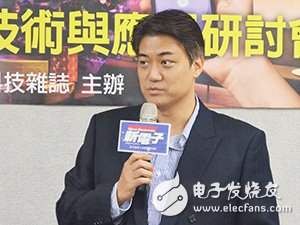In order to get rid of the price war, the lighting industry has been actively developing towards smart lighting in recent years, and has tried to make lighting equipment more valuable by integrating functions such as networking and environmental sensing. Lighting equipment is moving towards multi-functional integration, which also brings new opportunities to the technology industry.
Lighting is inextricably linked to the lives of modern humans, and lighting can be seen in almost every area of ​​human activity. However, because different fields have different application requirements, in some special areas, lighting equipment is not only used to illuminate the environment, but also plays the role of environmental sensing or communication nodes. The trend of lighting equipment towards multi-functional integration has made many technology industry companies that were not related to the lighting industry become part of the lighting industry.
LED driver is still the main challenge for smart lighting
Zhang Wengui (picture 1), senior marketing manager of Infineon in Taiwan, said that the market demand for smart lighting has grown very significantly in recent years, especially in the public lighting sector. As the world's major cities promote smart city planning, more energy-efficient, more functional street lighting equipment has begun to appear around the world.
For example, Infineon is currently working with Intel and eluminocity to promote a smart streetlight project in Europe. The streetlights used in the project are equipped with various environmental sensors and radar systems. When no vehicles pass by the streetlights, the illumination can be dynamically adjusted to save energy. Moreover, the smart street light is not only power-saving, but also equipped with alarms, traffic flow detection, air quality detection, parking management and other functions. It can even add electric vehicle charging pile modules to allow street lamps to directly charge electric vehicles. .
Multi-functional integration is the future of street lighting equipment, so power supplies, sensing components and embedded safety components will play a more important role in such applications. However, because street lighting equipment must integrate more functions in a given space, it is necessary to make the LED driver subsystem more compact and more efficient, in order to leave valuable space to other functions. To this end, Infineon launched the XDP technology platform and CoolMOS and CoolGaN two series of products to reduce the space occupied by the LED driver subsystem.
In fact, from the perspective of power supply design, the lighting system not only faces the challenge of miniaturization of LED drivers, but also faces two contradictory technical requirements: in order to reduce virtual work, government regulations require street lamps to support power factors. Correction (PFC), but PFC is also the most important cause of LED strobe, and if there is no proper prevention and control measures for stroboscopic light, it will make people feel uncomfortable, but the health of people will be damaged. Therefore, how to balance the power saving and the comfort of the human eye has always been the most troublesome problem for the driver of LED lighting.
In response to the above challenges, the International Institute of Electrical and Electronics Engineers (IEEE) has established the IEEE Std 1789-2015 standard to advise on the modulation of LED drive currents in order to enable high-brightness LED lighting applications such as street lamps to be used in power efficiency and human eyes. A good balance between comfort levels. Infineon's solution makes it easy for streetlight developers to design applications that comply with relevant specifications.
Multi-sensors create added value for lighting
Sensors are an indispensable element of smart lighting, with ambient light detection being the most common basic function. Through ambient light sensing, lighting fixtures can determine the lighting conditions in their environment, and then automatically adjust the brightness to maximize energy efficiency. However, in addition to ambient light sensing, since the lamps are often located at the commanding heights in the indoor environment, they are excellent locations for sensing various indoor environmental parameters, so integrated organic compound sensors (VOC) and image sensors are integrated on the lamps. Equal sensors will be a trend worth watching.
Li Dinghan (Fig. 2), general manager of austrian microelectronics (ams) Taiwan, pointed out that for smart lamps, the installation of ambient light sensors is the most natural choice. Through the ambient light sensor, the luminaire can grasp the indoor lighting conditions, and then automatically adjust the brightness to achieve the best power saving benefits.

Figure 2 Li Dinghan, general manager of austriamicrosystems Taiwan, believes that smart lighting will become a very important sensing center in the indoor environment.
However, illuminance sensing is only the most basic function, and future ambient light sensors support color temperature sensing, which will be a major development trend. By integrating the color temperature sensing function, the LED lamps can also dynamically adjust the color temperature of the natural light at that time to create more comfortable lighting conditions. In fact, color temperature changes will have a great impact on the operation of human physiological clocks, so this function will inevitably become more popular in the future.
In addition to ambient light sensing, since the position of the luminaire in the room is often at the high point and there is no dead angle occlusion, integrating other sensors such as images and organic compound sensing on the luminaire is also very The ideal choice. For example, if you add an image sensor to the luminaire and then use the corresponding software, you can calculate how many people in the indoor space and how the activity is; if you install an organic compound sensor on the luminaire, you can achieve The monitoring of indoor air quality allows the air conditioning system to be more intelligently adjusted.
9000Puffs Disposable Vape,9000Puffs Disposable Vape Device,Vape Pen 9000Puffs,R&M 9000Puffs Vape Device
Shenzhen Uscool Technology Co., Ltd , https://www.uscoolvape.com